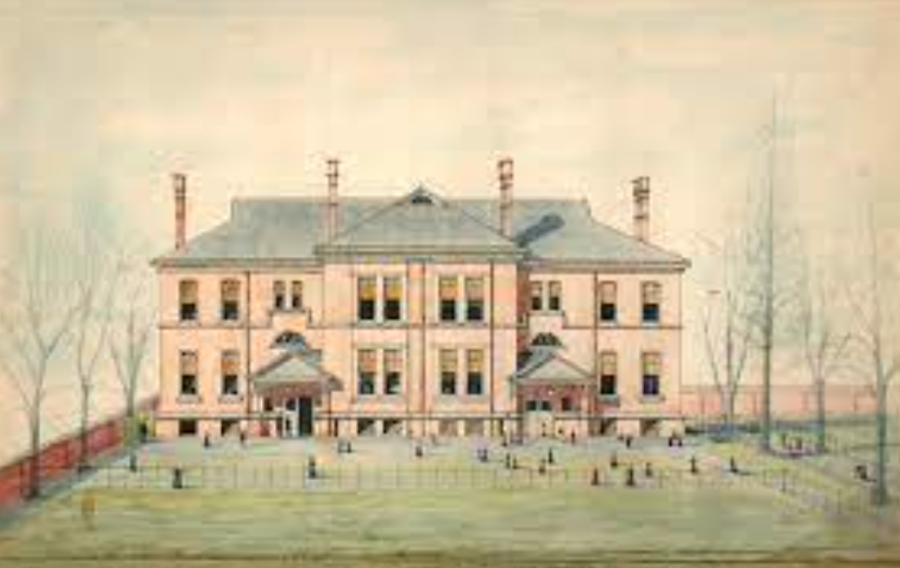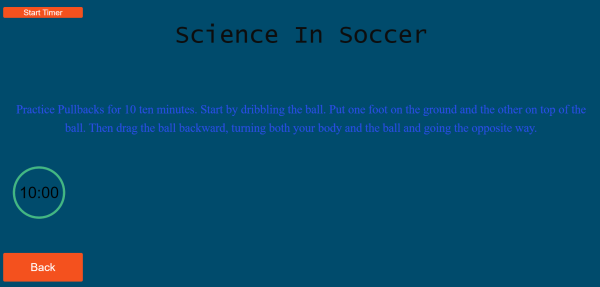A Deeper Look Into Friends Select School History
With the new roof, a new lobby, and a brand new building coming next year, Friends Select has recently been undergoing unprecedented changes to its physical appearance. Despite the vertical expansion and major renovations to Center City Philadelphia, Friends Select has maintained its spot on 17th and the Parkway for the last 130 years. Throughout this time, we have witnessed some of the most notable moments in US history; I decided that it was time to dive deeper into the school’s history and figure out exactly how Friends Select has evolved with the rest of the nation.
************
I first met with Dick Hoffman, the Friends Select archivist, in his office in the electrical room. I came prepared with questions about how he had seen Friends Select evolve over his 59-year career, and what the archives reveal about our school’s history.
When I first sat down in the chair across from him, he immediately revealed that the Friends Select archives were actually locked away in long-term storage and were currently inaccessible. However, he offered me an alternative.
HOFFMAN: “Here’s one thing that I can loan you, if you would like… in here, it has things like how people got here back in the old days, like how people from South Jersey used to take a train to Camden, a ferry across the Delaware River, and then the trolley to school. This talks about the Parkway and all it has changed, and well the school moved here before the Parkway, and eventually, they were gonna cut off a big part of the school property for the Parkway, but the plan was changed to only cut off a sliver of our block. But here’s the archives edition for you. Why don’t you read through this a little this weekend, and come back later with some questions.”
He left me with a book titled A Friends Select School History. It was a very dull blue on the outside, but it contained hundreds of pages with detailed personal accounts and records of Friends Select’s history. I proceeded to go home that weekend to read through the stories and records detailed in the book – some of them written written by Mr. Hoffman himself.
In terms of the school’s physical evolution, a lot has certainly changed. The amount of luck that has protected and maintained Friends Select’s current location is incredible. Not only did we narrowly avoid being run over by the Parkway, but our building also managed to land in the convenience of Suburban Station, The Free Library, the Philadelphia Museum of Art, LOVE Park, and Logan Square, all which were built after our arrival, explains the book. It’s almost as if the most convenient locations in the city were built perfectly around us. Dick Hoffman also added that initially securing this building was extremely fortunate: “There’s no question that moving into this building in the first place was amazing… Once we were here, we had a swimming pool, which we never had before, and a playing field on the roof [which] is a unique feature to the school.”
Despite our surface-level claim of staying in the same spot for 130+ years, Friends Select has had to briefly move multiple times. During one of these times, the school moved into what is now the Hilton Hotel. During this period, the school assumed that there would be a substantial drop in enrollment, however, the enrollment surprisingly increased by a lot!
The book explores many interesting topics, like the origins of Friends Select’s oldest clubs and accounts of our successful sports teams. The Cauldron and The Falcon have been publishing written pieces dating back to 1900, and the field hockey team has been winning titles since 1919 with nearly undefeated records.
************
However, there were a few things that weren’t covered in the book, like how Friends Select dealt with the Great Depression or the Civil Rights Movement, and I still needed clarification on some of these topics. So, I returned to Mr. Hoffman about a week later, and I asked him to elaborate on these things, among others, with as much knowledge as he had.
JOHNSON: So, I read through the book and there were parts that talked about how we had dealt with certain eras of America and how we navigated those times, but there were a few points in time that the book didn’t cover, such as the World Wars and the Civil Rights Movement. Could you elaborate on how we responded to, specifically, the World Wars and the Civil Rights Movement?
HOFFMAN: World War I is, I have seen almost no material on. World War II was obviously a difficult time for the school because many of our students were not Quakers, and thus were not pacifists, and when they graduated they faced the draft, and they were drafted! There were actually some students that enlisted before they graduated, and then they had to come back and graduate later. Certainly, you probably read about Jonathan Steer, who was a faculty member and a conscientious objector, and he went in and did his service, so there was a real mix of people. Certainly, from what little things I’ve been able to see from The Cauldron and whatnot, there were conflicts in people’s minds about the war not being a really good thing or appropriate thing… And certainly because, for many decades, we had a very substantial Jewish population, with real turmoil about the Holocaust.
From what Mr. Hoffman was saying, Friends Select students definitely had a chaotic experience during World War II. The large Jewish population, which is still retained today, had a very tough time dealing with the heavy events of the Holocaust, and other students and faculty members faced the draft. I then encouraged Dick to talk about the Civil Rights Movement.
************
HOFFMAN: It’s interesting because so many things converged, specifically in the ’60s. It’s sometimes hard to really separate out what was going on in the Civil Rights Movement and what was going on in the anti-Vietnam War Movement, and what was going on in the general upheaval on college campuses, in those 2 movements and on students having more say in their education. In the late 60s, that was all going on in college campuses, and then it moved down to high schools, so in 1969, 1970, and 1971, some of these things were obviously percolating around Friends Select. Now of course in 19–, pshh, it must’ve been 1970, the “Black Student League” was proposed, and after a lot of discussion in the faculty and the Board of Trustees, it was allowed to start. And there were people who said that you know, you’re bringing in a segregated group in a way, and there were people who objected to that. And then there were other people who were like, Black people have a unique learning experience and living experience, and we should be able to meet together, and eventually, that happened.
In Philadelphia, the Civil Rights Movement was definitely necessary in order for the progression of rights for people of color. According to Temple University historians, Philadelphia was better for people of color compared to the South, but “segregation was practiced all across the city in hotels, restaurants, theaters, workplaces, trade unions, residential neighborhoods, even schools.” I was glad to hear that the Friends Select faculty was able to progress along with the rest of Philadelphia during these terrible times.
************
JOHNSON: Next, I know that the Great Depression struck Philadelphia really hard, so could you explain how Friends Select dealt with the Great Depression?
HOFFMAN: Well it was a tough time for the school, you know all private schools had a tough time, simply because people couldn’t afford to send their kids to a private school. Even though the tuition, you wouldn’t believe this, in the early 1930s was around $250 a year! Haha, and I know that there was one situation where a man had a son, here in school, and he was an artist, and he couldn’t afford the tuition, so he gave the school 4 of his paintings. And we still have them, and they’re in the storage area now. So, the faculty was definitely in dire straits as far as payment was concerned. And you would see things in the school committee minutes where a teacher was asking for an extra $25 because they weren’t able to feed their families. So, things were very difficult. And I only saw the last bits of this, because I was born in 1935, and the depression wasn’t as bad then, but the Depression really didn’t end until war industries came into being in the 40s.
During the Great Depression in Philadelphia, unemployment jumped to 10% and the majority of workers were part-time. However, through some paintings and extra pay, Friends Select managed to survive America’s greatest economic depression.
************
By what seems like a miracle, Friends Select School is still around today, and we should be happy about where we are. Whether our building was getting demolished or we had to move to a hotel for a few years, our community’s evolution was not linear. Though we struggled to find people who were willing to pay our $250 tuition during the Great Depression and sent people off to the World War II draft during their high school years, we still remain on 17th and the Parkway over a century later. As we continue to watch these historic changes to our building, we should be mindful that this will soon just be another chapter in A Friends Select School History.








